Analysis of Optical Diffraction Profiles Created by Phase-Modulating MEMS Micromirror Arrays
Abstract
:1. Introduction
2. Theory and Methods
2.1. Analysis of Light Diffraction from Phase-Modulating Micromirror Array
2.2. Optical Intensity Model for Diffracted Light Beams
Analysis of Light-Intensity Modulation due to Phase Shift
3. Results and Discussion
3.1. Microelectromechanical System (MEMS)-Based Optical Phased Array (OPA) Design and Fabrication Considerations
3.1.1. Active Optical Phased Array Device
3.1.2. Pitch-Tuning Optical Phased Array Device
3.2. Experimental Assessment of OPA Devices
4. Conclusions
Author Contributions
Funding
Acknowledgments
Conflicts of Interest
Appendix A
References
- Sun, J.; Timurdogan, E.; Yaacobi, A.; Su, Z.; Hosseini, E.S.; Cole, D.B.; Watts, M.R. Large-scale silicon photonic circuits for optical phased arrays. IEEE J. Sel. Top. Quantum Electron. 2014, 20, 8201115. [Google Scholar]
- Kim, T.; Bhargava, P.; Poulton, C.V.; Notaros, J.; Yaacobi, A.; Timurdogan, E.; Baiocco, C.; Fahrenkopf, N.; Kruger, S.; Ngai, T.; et al. A Single-Chip Optical Phased Array in a Wafer-Scale Silicon Photonics/CMOS 3D-Integration Platform. IEEE J. Solid-State Circuits 2019, 54, 3061–3074. [Google Scholar] [CrossRef]
- Solgaard, O.; Godil, A.A.; Howe, R.T.; Lee, L.P.; Peter, Y.-A.; Zappe, H. Optical MEMS: From micromirrors to complex systems. J. Microelectromech. Syst. 2014, 23, 517–538. [Google Scholar] [CrossRef]
- Zhou, G.; Lee, C. Optical MEMS, Nanophotonics, and Their Applications; CRC Press: Boca Raton, FL, USA, 2017. [Google Scholar]
- Chung, S.; Abediasl, H.; Hashemi, H. A monolithically integrated large-scale optical phased array in silicon-on-insulator. IEEE J. Solid-State Circuits 2018, 53, 275–296. [Google Scholar] [CrossRef]
- Krochin-Yepez, P.; Scholz, U.; Caspers, J.; Zimmermann, A. Novel measures for thermal management of silicon photonic optical phased arrays. IEEE Photonics J. 2019, 11, 1–15. [Google Scholar] [CrossRef]
- Wang, Y.; Liang, L.; Chen, Y.; Jia, P.; Qin, L.; Liu, Y.; Ning, Y.; Wang, L. Improved performance of optical phased arrays assisted by transparent graphene nano-heaters and air trenches. RSC Adv. 2018, 8, 8442–8449. [Google Scholar] [CrossRef] [Green Version]
- Song, Y.; Panas, R.; Hopkins, J. A review of micromirror arrays. Precis. Eng. 2018, 51, 729–761. [Google Scholar] [CrossRef]
- Ersumo, N.T.; Yalcin, C.; Antipa, N.; Pégard, N.; Waller, L.; Lopez, D.; Muller, R. A micromirror array with annular partitioning for high-speed random-access axial focusing. Nat. Light Sci. Appl. 2020, 9, 183. [Google Scholar] [CrossRef] [PubMed]
- Lee, B. DMD 101: Introduction to Digital Micromirror Device (DMD); Texas Instruments: Dallas, TX, USA, 2013. [Google Scholar]
- Milanovic, V.; Castelino, K.; McCor, D. Fully functional tip-tilt-piston micromirror array. In Proceedings of the IEEE/LEOS International Conference on Optical MEMS and Their Applications Conference, Big Sky, MT, USA, 21–24 August 2006; pp. 38–39. [Google Scholar]
- Solgaard, O.; Sandejas, F.S.A.; Bloom, D.M. Deformable grating optical modulator. Opt. Lett. 1992, 17, 688–690. [Google Scholar] [CrossRef] [PubMed]
- Amm, D.; Corrigan, R. Grating Light Valve technology: Update and novel applications. SID Int. Symp. Dig. Tech. 1998, 29, 29–32. [Google Scholar] [CrossRef] [Green Version]
- Landry, J.R.; Hamann, S.S.; Solgaard, O. Random Access Cylindrical Lensing and Beam Steering Using a High-Speed Linear Phased Array. IEEE Photonics Technol. Lett. 2020, 32, 859–862. [Google Scholar] [CrossRef]
- Ashida, Y.; Hamann, S.; Landry, J.; Solgaard, O. Conjugated MEMS Phased Arrays for Large Field of View Random Access Scanning. IEEE Photonics Technol. Lett. 2020, 32, 1291–1294. [Google Scholar] [CrossRef]
- Wang, Y.; Wu, M.C. Micromirror based optical phased array for wide-angle beam steering. In Proceedings of the 2017 IEEE 30th International Conference on Micro Electromechanical Systems (MEMS), Las Vegas, NV, USA, 22–26 January 2017; pp. 897–900. [Google Scholar]
- Mohammad, T.; He, S.; Ben Mrad, R. Conventional Surface Micromachining Process for the Fabrication of a Linear Optical Phased Array Based on Piston Micromirrors. J. Micromech. Microeng. 2021, 31, 065009. [Google Scholar] [CrossRef]
- Mohammad, T.; He, S.; Ben Mrad, R. A MEMS Optical Phased Array Based on Pitch Tunable Silicon Micromirrors for LiDAR Scanners. J. Microelectromech. Syst. 2021. [Google Scholar] [CrossRef]
- Zappe, H. Fundamentals of Micro-Optics; Cambridge University Press: Cambridge, UK, 2010. [Google Scholar]
- Solgaard, O. Photonic Microsystems: Micro and Nanotechnology Applied to Optical Devices and Systems; Springer: New York, NY, USA, 2009. [Google Scholar]
- Yoo, B.; Megens, M.; Chan, T.; Sun, T.; Yang, W.; Chang-Hasnain, C.; Horsley, D.; Wu, M.C. Optical phased array using high contrast gratings for two-dimensional beamforming and beam steering. Opt. Express 2013, 21, 12238–12248. [Google Scholar] [CrossRef] [PubMed]
- Purcell, E.; Morin, D. Electricity and Magnetism, 3rd ed.; Cambridge University Press: Cambridge, UK, 2013. [Google Scholar]
- Kubby, J. A Guide to Hands-on MEMS Design and Prototyping; Cambridge University Press: New York, NY, USA, 2011. [Google Scholar]
- Mohammad, T.; He, S.; Ben Mrad, R. Integration and Control of a MEMS Optical Phased Array Scanner. In Proceedings of the 8th International Conference of Control Systems, and Robotics (CDSR’21), Niagara Falls, ON, Canada, 23–25 May 2021; p. 304. [Google Scholar]
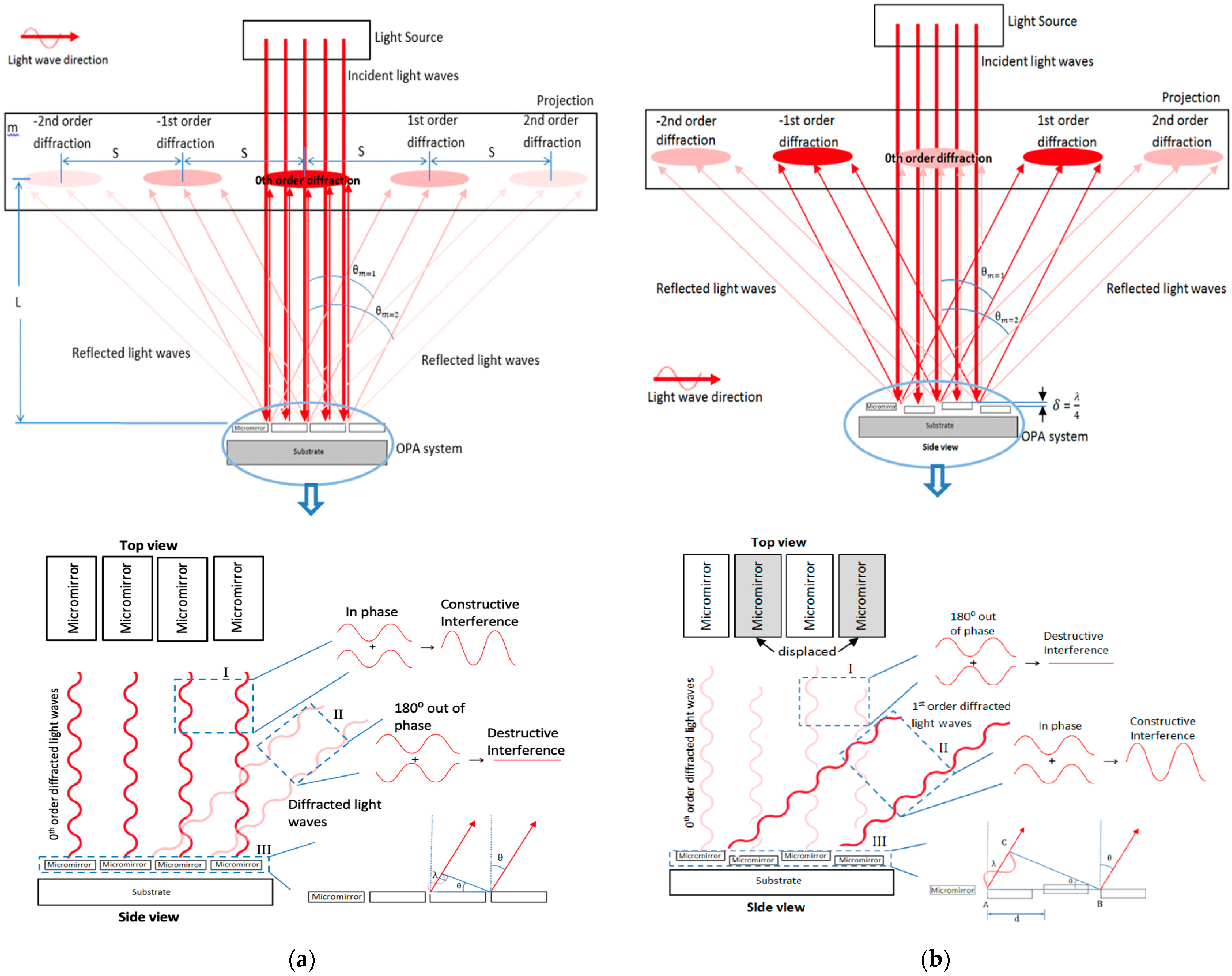

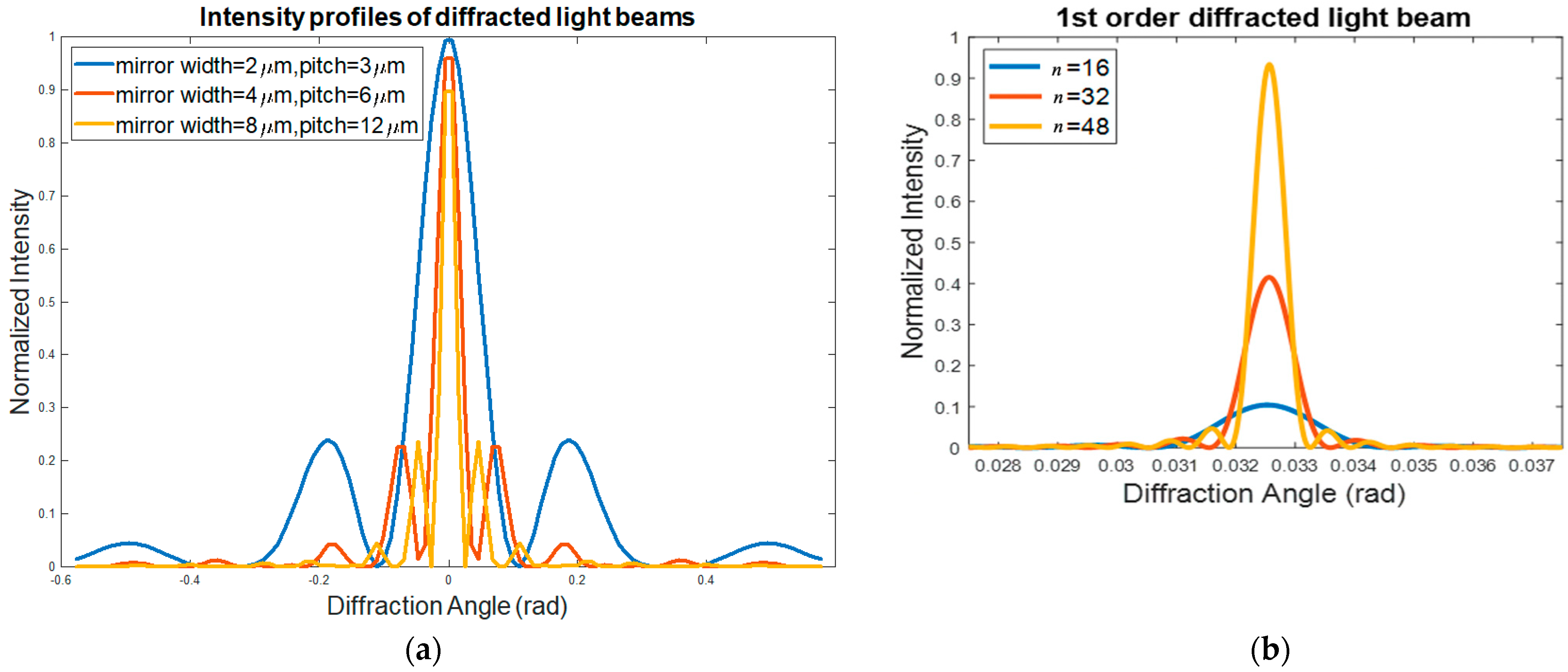
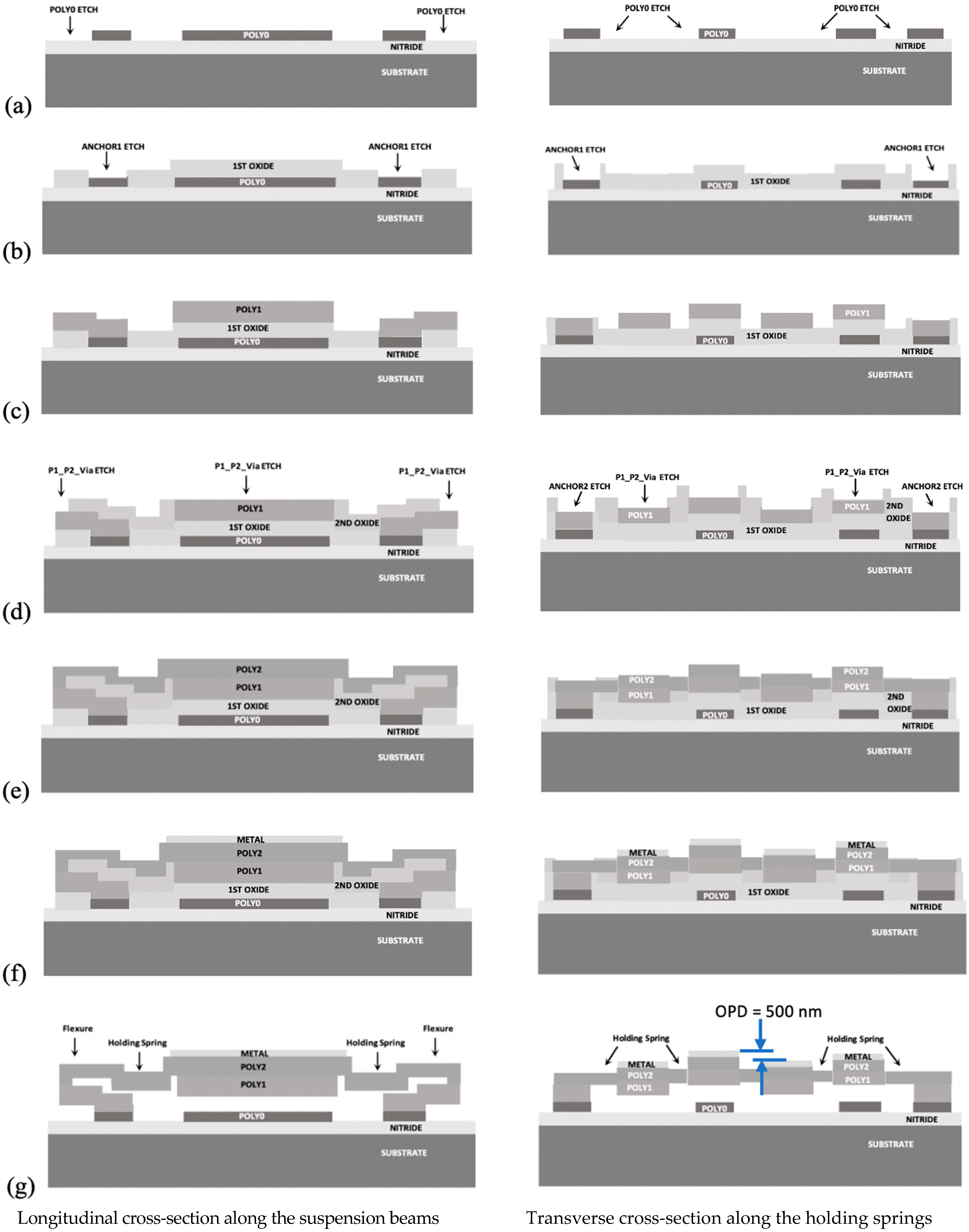
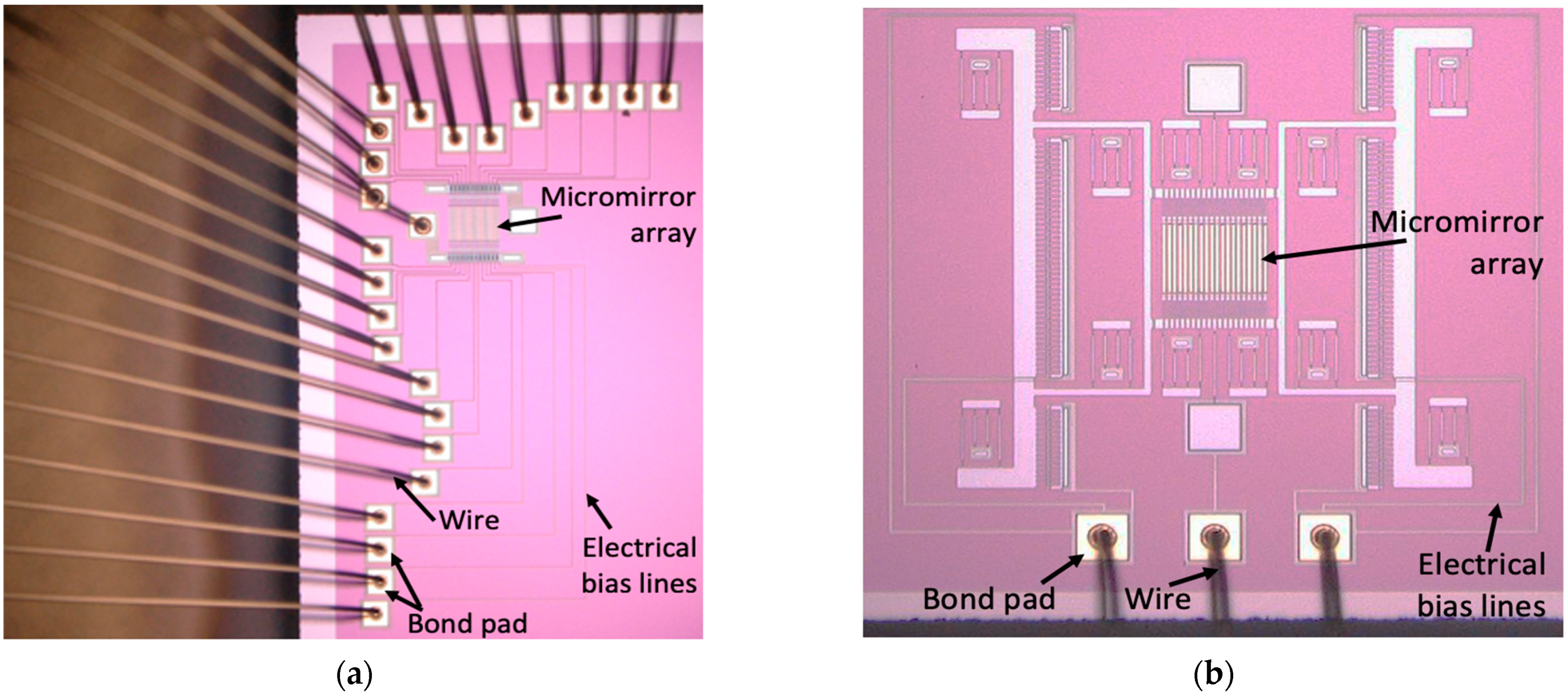
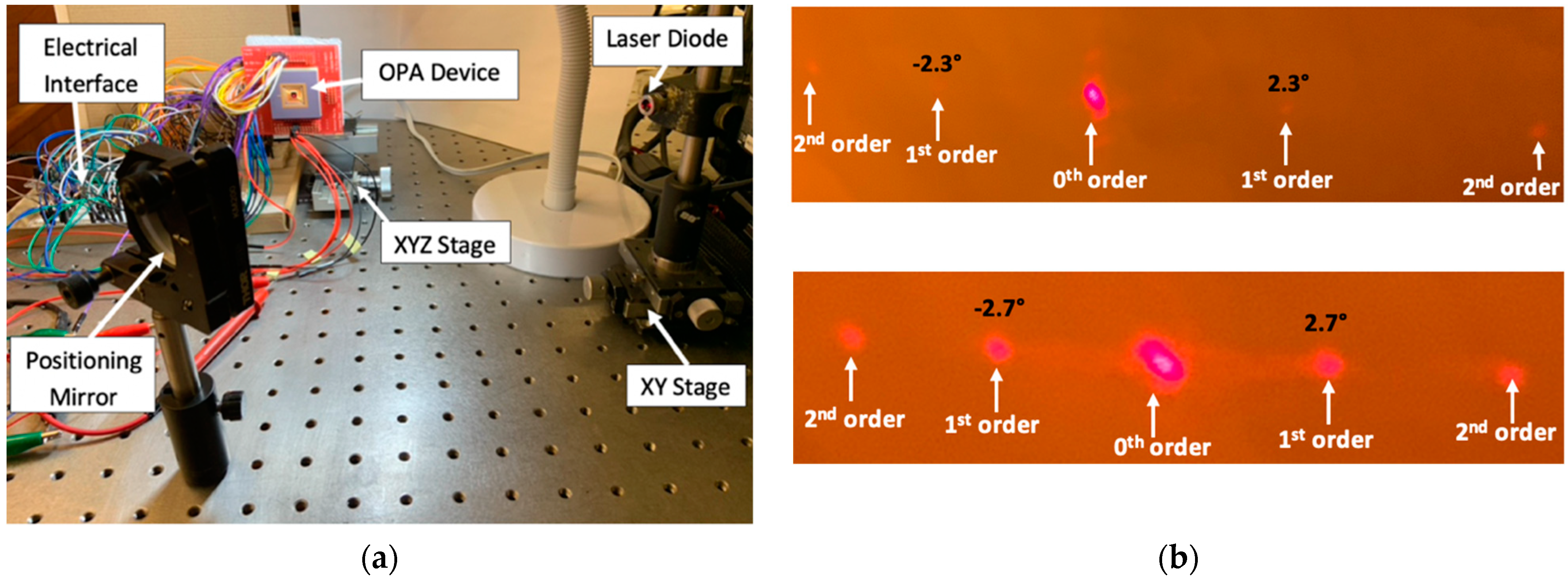


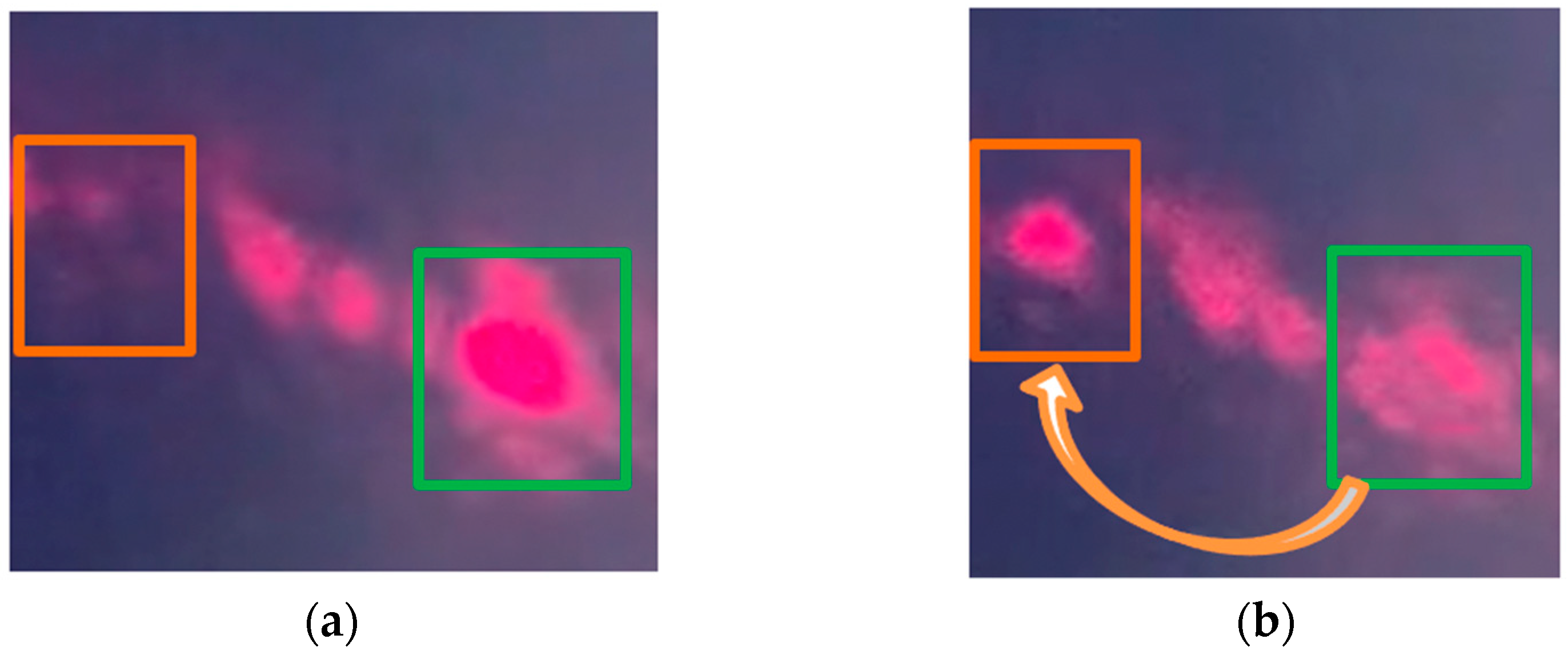
| Design Parameters | Active OPA | Pitch-Tuning OPA |
|---|---|---|
| Micromirror width | 4.5 µm | 5 µm |
| Micromirror length | 135 µm | 4 µm |
| Micromirror beam length | 4.25 µm | 185 µm |
| Planar gap between adjacent mirrors | 3.5 µm | 5 µm |
| Number of micromirrors | 24 | 20 |
| Mirror pitch size | 8 µm | 7–10 µm (variable) |
| Maximum scan (half) angle at 635 nm wavelength | ±2.3° | ±2.7° to ±3.4° |
| Total array size (reflective surface area) | 185 µm × 135 µm | 195 µm × 180 µm |
| Fill factor | 37.5% | 40%–57% |
| Bond pad size | 100 µm × 100 µm | 100 µm × 100 µm |
| Number of bond pads | 25 | 3 1 |
Publisher’s Note: MDPI stays neutral with regard to jurisdictional claims in published maps and institutional affiliations. |
© 2021 by the authors. Licensee MDPI, Basel, Switzerland. This article is an open access article distributed under the terms and conditions of the Creative Commons Attribution (CC BY) license (https://creativecommons.org/licenses/by/4.0/).
Share and Cite
Mohammad, T.; He, S.; Mrad, R.B. Analysis of Optical Diffraction Profiles Created by Phase-Modulating MEMS Micromirror Arrays. Micromachines 2021, 12, 891. https://doi.org/10.3390/mi12080891
Mohammad T, He S, Mrad RB. Analysis of Optical Diffraction Profiles Created by Phase-Modulating MEMS Micromirror Arrays. Micromachines. 2021; 12(8):891. https://doi.org/10.3390/mi12080891
Chicago/Turabian StyleMohammad, Tarek, Siyuan He, and Ridha Ben Mrad. 2021. "Analysis of Optical Diffraction Profiles Created by Phase-Modulating MEMS Micromirror Arrays" Micromachines 12, no. 8: 891. https://doi.org/10.3390/mi12080891
APA StyleMohammad, T., He, S., & Mrad, R. B. (2021). Analysis of Optical Diffraction Profiles Created by Phase-Modulating MEMS Micromirror Arrays. Micromachines, 12(8), 891. https://doi.org/10.3390/mi12080891






